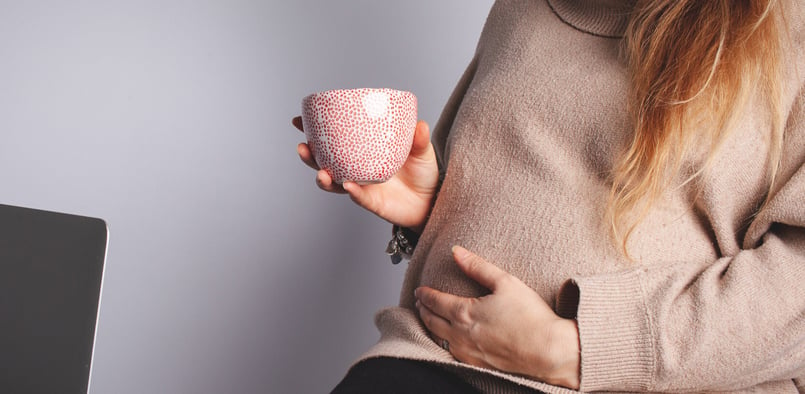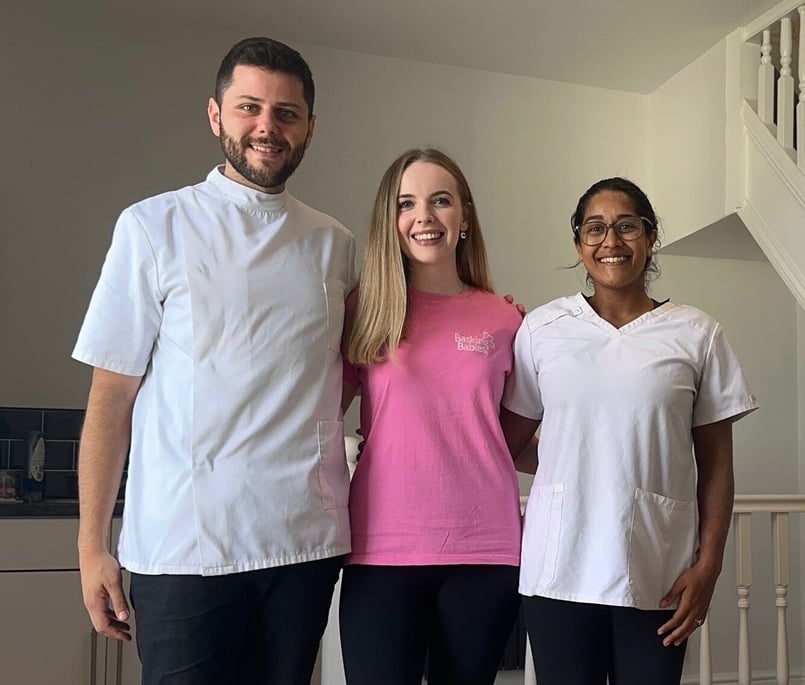
Bringing a new baby into the world brings a lot of change - lots of it joyful! This week, Hayley from Basking Babies Epping, Harlow & Loughton caught up with the team at Ben Cohen Osteopathy to talk about some of the physical changes that can result from childbirth.
What are some common musculoskeletal changes new mothers might experience after giving birth?
One of the most common presentations our osteopaths see in clinic of new mums include pelvic pain, lower back pain, diastasis recti, as well as generalised neck and shoulder pain.
The body goes through numerous changes during pregnancy and childbirth which can contribute to the issues described above.
One big contributing factor for this is an increase in the hormone relaxin. When relaxin in the body increases, it creates more ligament laxity, which in turn increases the movement of joints. During pregnancy, this is beneficial and necessary to allow for changes in the pelvis in preparation for delivery.
Increased levels of relaxin is a fantastic evolutionary change that the body has developed in order to aid the birthing process.
However…
These levels of relaxin remain elevated for months following childbirth.
As ligament laxity is present throughout the body, this can create excess movement of joints that were previously stable, leading to joint instability and subsequent pain developing.
Some of the most common areas of discomfort we are presented with in clinic are lower back and pelvic pain - the areas which undergo the biggest changes during pregnancy and delivery.

How can new mothers manage and alleviate lower back pain after birth?
Motherhood is a beautiful journey, but it can take a toll on a woman’s body. From pregnancy to labour and the postnatal phase, the physical changes can be overwhelming. That’s where a Mummy MOT comes in—a specialised assessment designed to help mothers reclaim their bodies and wellbeing after childbirth. If you’re considering undergoing a Mummy MOT, this blog will guide you through what to expect and how it can benefit you.
What is a Mummy MOT?
A Mummy MOT is a postnatal assessment that focuses on a mother’s physical health and wellbeing following childbirth. It’s a holistic approach that helps women regain strength, improve posture, and address any discomfort or dysfunction experienced during or after pregnancy. Typically conducted by osteopaths with expertise in postnatal care, the assessment is tailored to each individual, taking into consideration their unique experiences and concerns.
Initial consultation
1. Personalised health history - The Mummy MOT begins with a detailed consultation. Expect to share your medical history, including any complications during pregnancy and birth, prior health issues, and your current physical condition. This step is crucial for tailoring the assessment to your needs.
2. Goal setting - During your consultation, the practitioner will ask about your personal goals. Whether it's improving core strength, addressing pelvic pain, or simply feeling more energetic. Outlining your objectives helps shape the focus of your Mummy MOT.
Physical assessment
1. Posture analysis - Your posture will be evaluated while standing or sitting. Many mothers find that their posture changes after childbirth due to shifting body mechanics and the demands of carrying and caring for a newborn. The assessment will highlight any areas of concern and provide insights into how to improve alignment.
2. Core and pelvic floor examination - A primary focus of the Mummy MOT is the evaluation of core strength and pelvic floor function. The practitioner may perform a series of specific tests to assess the strength and coordination of these critical muscles. This step is vital for addressing issues like urinary incontinence, pelvic pain, and diastasis recti (separation of abdominal muscles).
3. Movement patterns - You may be asked to perform some basic movements like squats, lunges, or walking. This helps the practitioner observe your movement patterns, identify any restrictions, and pinpoint areas that may need strengthening or rehabilitation.
Personalised treatment plan
Based on the assessment results, the osteopath will develop a customised treatment plan specifically designed for you. This plan may include:
1. Exercises - Expect a range of exercises targeted at strengthening your core and pelvic floor muscles, improving your posture, and enhancing overall body function. These exercises will be demonstrated and tailored to match your current fitness level.
2. Breathing techniques - Breathing is a powerful tool in pelvic floor rehabilitation. Osteopaths often incorporate breathing techniques that can enhance your body’s recovery and overall functioning.
3. Manual therapy - In some cases, manual therapy techniques may be utilised to address any tightness or discomfort in your muscles or joints. This could involve soft tissue mobilisation or myofascial release techniques aimed at relieving tension.
4. Education - You’ll learn valuable information about your body’s changes, self-care practices, and daily activities to support your recovery. This understanding is crucial for encouraging long-term health and wellness.
Follow-up and ongoing support
A Mummy MOT is not just a one-off appointment. Regular follow-ups may be recommended to monitor your progress, adjust your treatment plan, and introduce new exercises as you gain strength. Ongoing support can be immensely beneficial for sustaining your health journey and ensuring you continue to feel your best as you navigate motherhood.
If you want to find out more about how to help with any of the issues mentioned above, we will be running a mummy MOT presentation with Hayley from Basking Babies, Epping, Harlow & Loughton very soon. It will include some useful tips and advice and will also give you an opportunity to ask our Mummy MOT Osteopath any questions you may have.
You can also find out more about Mummy MOTs here.
